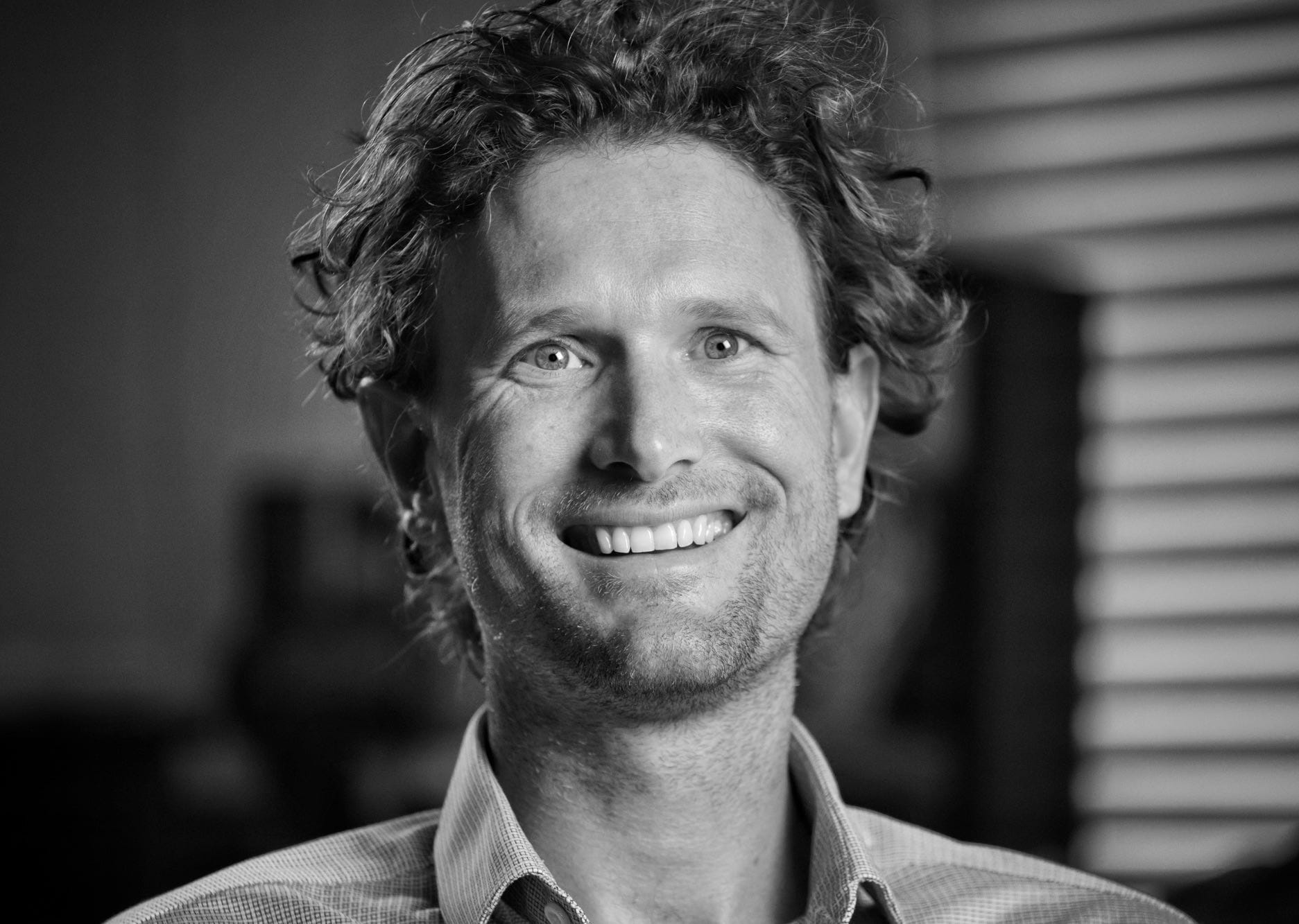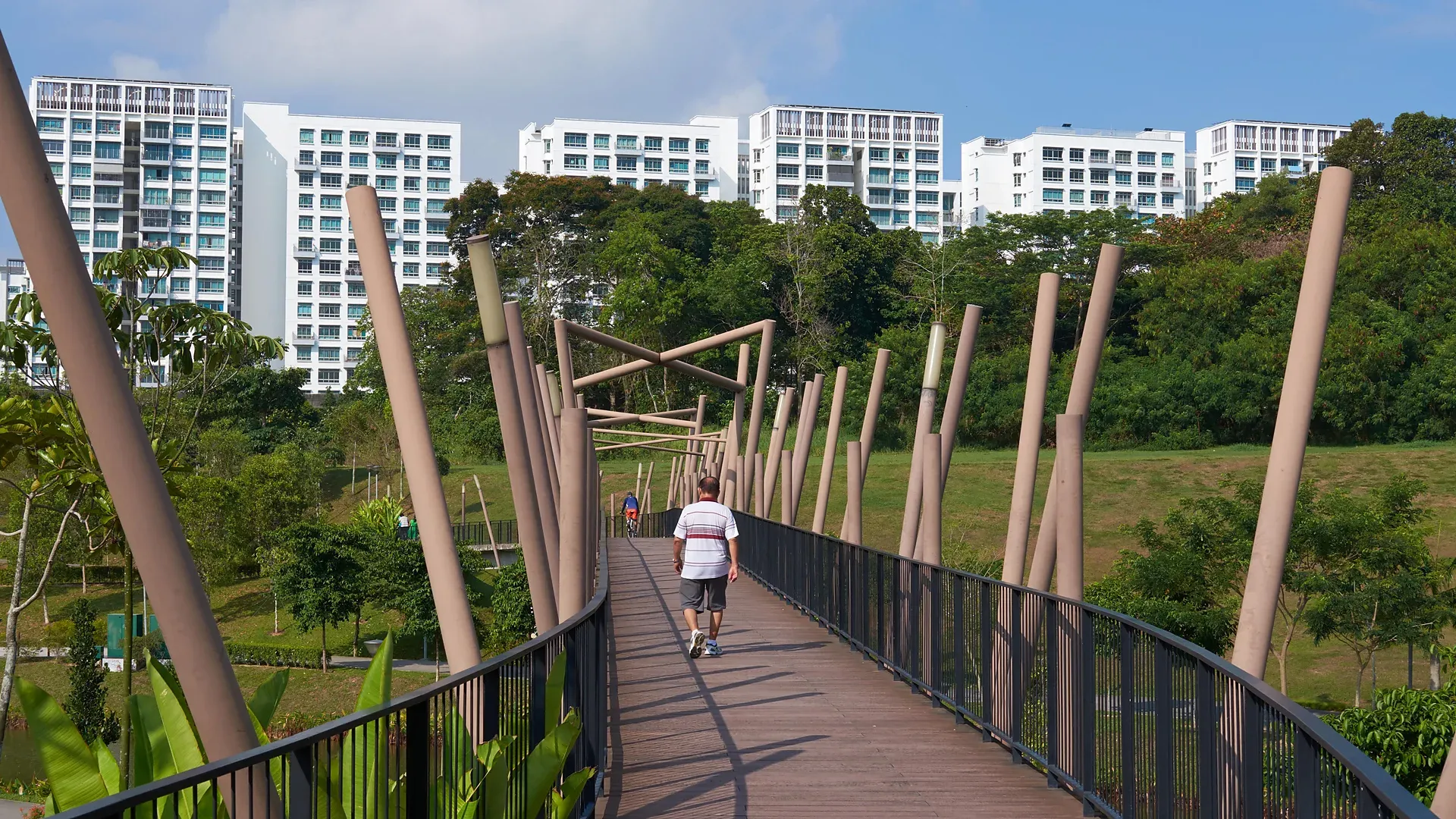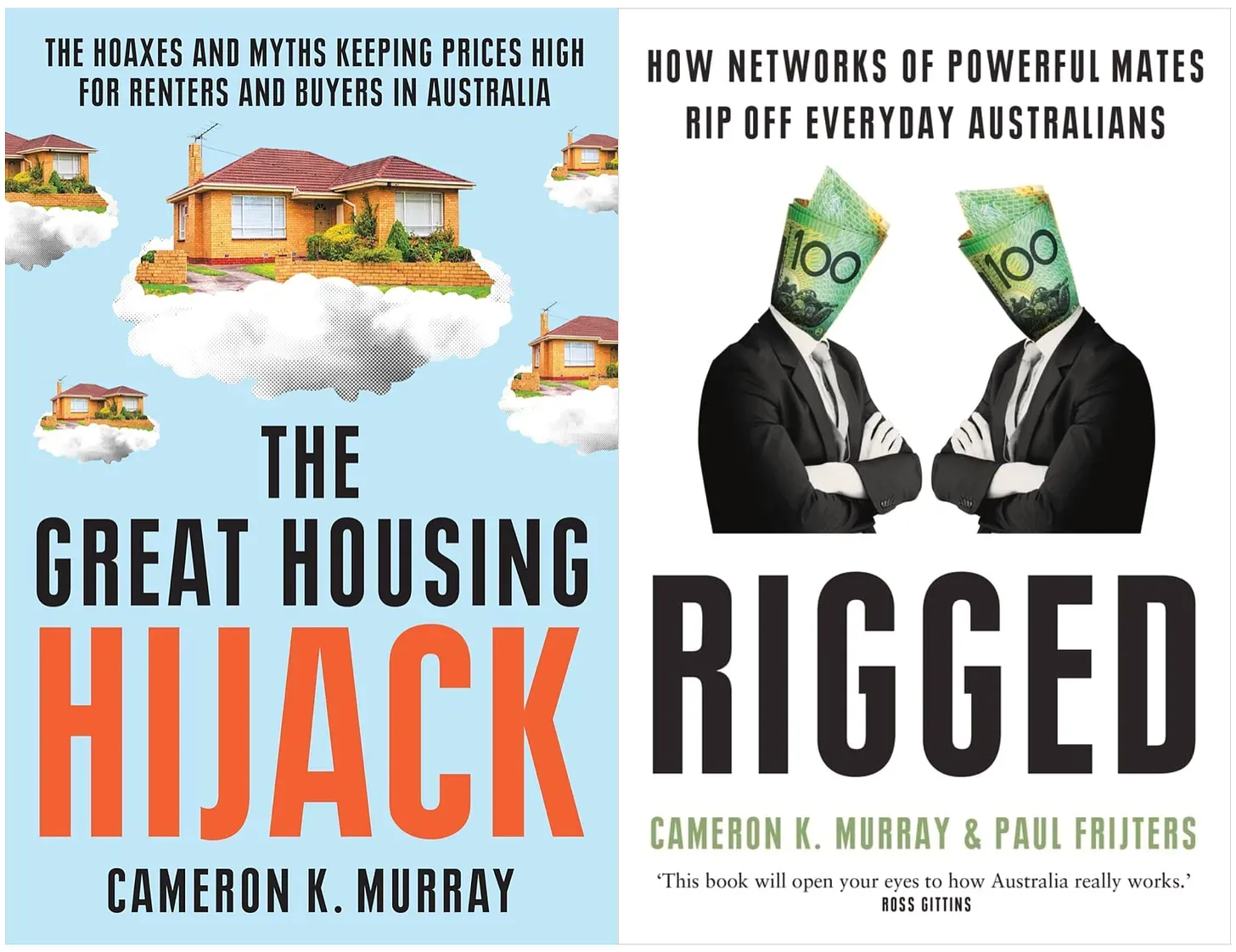Affordable Housing: Numbers v. Narratives

by Cat Holloway /
Economists have a knack for letting the truth get in the way of a good story. But Dr Cameron Murray’s decade-long investigation into the true story behind affordable housing is as compelling as it is surprising.
Do you own, rent or want a home? Do you think you know about affordable housing - or care to know? Do you wonder what those in power are doing to help?
If you answered yes to any of these, read on. It’s eye-opening stuff.
Murray asks his audience to ‘leave your -isms at the door’. He said some on the left of politics see him as conservative or a ‘crazy libertarian’ while many on the right think he’s a ‘socialist greenie’.
“I simply don’t care about tribal games. I like ideas, systems, and policies that work. I don’t care whose ideas they are.” Murray writes in his bio on the Fresh Economic Thinking newsletter and podcast.

Murray is an expert in property and housing markets, environmental economics, and corruption. He was a Henry Halloran Trust Post-Doctoral Research Fellow at The University of Sydney and is aware of 'the irony’ of his work being funded by a land developer. Henry Halloran and his son, Warren, developed large areas of coastal NSW land and the Halloran name is on several controversial Shoalhaven developments.
But Murray’s straight talk is unaffected by affiliations. In 2022, he co-published Rigged: How Networks of Powerful Mates Rip Off Everyday Australians. Murray’s latest book, The Great Housing Hijack, is shaking up established economic assumptions, defining political policy, stimulating media questions and inspiring the public to understand a complicated topic affecting everyone.
With housing affordability long creating concern and debate in the Shoalhaven, The Spark will explore the issue this week from Dr Cameron Murray’s broad view and then from a local perspective. We start with our interview with Murray, his revelatory material in the Fresh Economic Thinking blog and excerpts from The Great Housing Hijack.
The Housing Crisis: Four Myths, One Solution
Dr Cameron Murray believes the debate about housing affordability is hard to follow because the term is vague. Proposed solutions favour property owners, not renters and buyers. He aims to cut through the complicated language and engage Australians in the truth.
Myth #1. What housing crisis?
Conventional wisdom blames Australia’s current ‘housing crisis’ on a perfect storm of home/land supply shortages, low interest rates, high inflation, and a construction industry boom-bust cycle.
But Murray says that’s nothing new and that looking through a long-term lens reveals that Australia has almost always been in a housing crisis. He said people who talk about letting market forces work are ‘historically illiterate’.
Murray’s housing history lesson highlights Charles Darwin, the father of evolutionary theory, during his visit to Sydney in 1836 on HMS Beagle, as an early commentator on Australia’s housing crisis from the first day he stepped ashore.
“the number of large houses just finished & others building is truly surprising; nevertheless every one complains of the high rents & difficulty in procuring a house . . .”
Friedrich Engels, a philosopher and Karl Marx collaborator, wrote a series of articles in 1872 seeking an answer to ‘The Housing Question’.
“The so-called housing shortage, which plays such a great role in the press nowadays…is not something peculiar to the present… On the contrary, all oppressed classes in all periods suffered more or less uniformly from it.”
In 1910, the New South Wales government commissioned University of Sydney academic Robert F. Irvine to investigate the problem of rising housing rents and policies other countries had adopted to remedy it.
“How, in the congested areas of large cities and in certain industrial centres, to get rid of the results of unregulated housing—over-housing, overcrowding, high rentals for inferior accommodation, and all the evils that flow from them.”
Murray said that rollicking free markets of the 19th century and the interwar period of the 20th century saw extremely low home ownership, high rents, low-quality dwellings and violent boom-and-bust price cycles.
A break in Australia’s permanent state of housing crisis happened during Robert Menzies' Liberal-Country Prime Ministership (1951-1966). Australia’s pre-WWII homeownership rate in urban areas was 46%. It increased from 46% to 72% between 1947 and 1966. Rents fell by 50%. Menzies poured federal money into public housing and boasted that he outdid the previous four Labor years in providing homes below the market price.
In those years, 15% of new dwellings were built by public housing agencies. Today, 15% of all new housing would be about 25,000-30,000 new dwellings per year.
According to Murray, that scale of housing reform is ‘hard to fathom today’.
Myth #2. It’s the local council’s fault.
Murray said housing market fluctuations are used as a whip against political enemies. But that makes little sense when every community in the world is saying the same thing regardless of policy initiatives or political dominance.
Murray said landowners complain that pesky council and state government red tape is slowing them down, yet they don’t actually want to build faster. Builders and developers build or develop when it is profitable to do so.
“Planning regulates where homes are built, but not how quickly they are built,” said Murray in his FET blog.
“Zoning for more housing is not the same as supplying more housing.
Who experiences crisis is the question, Murray said. When prices rise, renters and buyers are in crisis. When prices fall, owners and landlords feel the pinch.
While hardship is undeniable for people homeless from poverty or illness, the popular narrative of a modern society-wide struggle is not supported by the numbers.
Sydney rents, for example, are actually down from 2017. But as people in the Shoalhaven are keenly aware, rents are up here because post-covid circumstances saw wealthy city people rush to regions, especially coastal, fuelling exorbitant purchase prices and high rents keeping most locals out of the market.
“It’s not magic,” Murray said.
“Prices go up because rich people want to live there.”
“In areas like Byron Bay, you’re competing with Hollywood - you have to outbid Matt Damon for a house.
“Houses are expensive because someone is paying that price - it’s not rocket science.
“As incomes rise, so do house prices and rent. The trouble is that incomes have not risen evenly and uneven growth of income is the heart of the problem.”
Myth #3. Supply shortages put homeownership out of reach.
Murray said that the media tends to focus on how bad things are with an ‘if it bleeds, it leads’ mentality.
Stories about increasing homelessness and rising rents in regional areas are shocking. However, the statistics on home ownership are not universally dire.
Despite a slow, steady decline in homeownership, from 70% in 2001 to 66% in 2021, Murray said Australia has more, bigger, better dwellings per capita than at any point in history. In 2021 there were 170,000 first-home buyers - nearly twice the 85,000 average of the previous five years.
“If we are in a housing supply crisis, it's the smallest one ever.” Murray said
The supply myth claims that, if the property market could escape government interference, it would self-regulate to provide for all - wiping trillions of dollars from its own value.
Murray says that is nonsense pointing to many ‘zombie developments’ rising up now after 30 years of lying dormant after approval. Upzoning makes land enormously more profitable for developers but does not increase housing supply.
“Property owners are the only ones who can choose to build new homes, and they sensibly maintain a buffer stock of approved projects so they can optimally respond to changing market conditions.”
Myth #4. Politicians want cheap housing
According to Murray, politicians who talk about providing cheaper housing are lying. He said it was “implausible’ that more than 5,000 people would wipe billions from their own balance sheets, and those of their family and friends.
“Australia’s housing stock is worth about $10 trillion. That’s $1 million per household on average. It’s the largest asset class in the economy by far.
A policy that reduced home prices by 30% would wipe out $3 trillion of value from household balance sheets, hitting the highest income and most politically influential households the hardest.”
Likewise, politicians personally won’t want houses to get cheaper.
“… 226 federal politicians in the house and senate directly owned 525 residential properties between them—that’s 2.3 properties on average. If these were valued today at the $1 million per dwelling average, that’s over half a billion between them.
There are another 600 or so politicians in our state houses of parliament, again filled predominantly with homeowners and landlords. Australia’s roughly 500 councils have over 4,500 elected councillors, who are also heavily represented by property interests.
If they owned the 2.3 properties on average that we know federal politicians do, worth $1 million each, that’s $13 billion in property assets. A 30% price decline would wipe off over $4 billion in asset value from their own balance sheets.”
Murray said everyone wanted more housing supply, except the property market, which was why Australia needed a housing supplier outside the market.
A brave new public housing world
More than two years ago, Dr Murray published a comprehensive strategy to solve Australia’s affordable housing problem.
Called HouseMate, it proposed a national government institution to build new homes and sell them cheaply to any citizen without one. The plan presented housing as a basic right alongside education and healthcare.
HouseMate would sell discounted dwellings to Australian citizens aged over 24 in a de facto or married relationship and to single citizens aged over 28, where no household member owns property.
Up to 95% of the purchase price could be borrowed at one percentage point above the cash rate. Buyers would own the homes freehold and could use superannuation to cover a deposit and ongoing repayments. They would have to occupy the home for seven years before being allowed to sell.
Largely based on Singapore’s public housing system, it also took from Menzies era housing policies. Neither plan is considered left-wing, no-one would call Singapore communist. Singapore's system is based on the philosophy that a stable successful society with traditional values needs a secure housing system, without slums.

Since the 1980s, homeownership among Australians aged 25-34 dropped from around 60% to 45% and 71% to 65% across all age groups. But in the same time frame, homeownership in Singapore climbed from around 60% to 88%, a massive rise from only 20% homeownership in the 1960s.
Murray believes that no other housing policy would make homeownership cheaper, or free up income for families when they need it most. The Australian Greens Party agreed and last month announced a detailed housing policy modelled closely on HouseMate.
“I thought Housemate was equally likely to be adopted by the Liberals as the Greens. But the Greens got it first, so now everyone has to oppose it,” Murray said.
Prime Minister Anthony Albanese labelled the Greens plan ‘student politics’.
Murray disagreed saying that developing an affordable housing solution requires the hard work of long-term infrastructure planning, researching systems in other places and testing designs. He said HouseMate would work where fast-tracking upzoning and paving an open path for landlords and developers had not.
“Imagine a time when there were no schools and someone came along and said. ‘Lets build a school in every town and allow every single child to attend school for free.’
“At first people would say that was unrealistic, even idiotic. But that’s what we did and everyone thinks it's great.
“Once a radical idea becomes entrenched, people see it as the most obvious thing in the world.
“Look at roads. Political parties are actually competing to spend more on roads than their opponents. Because people bloody love roads.”
“We in Australia think the US medical system is naive and stupid because they don’t have a Medicare system that provides free medical care for all.”
Murray estimated a scheme like HouseMate would provide 30,000 affordable houses each year for $1 billion. Australia spent $100 billion on the COVID JobKeeper scheme and spends $125 billion per year on healthcare.
Private sellers and banks would likely oppose HouseMate for diverting first-home buyers from the private market. But Murray said that $11 billion is annually given to private landowners through rezoning decisions and taxing those value gains could fund HouseMate ten times over.
TOMORROW: A look at Shoalhaven's affordable housing future.

More from Dr Cameron Murray:
- Free webinar https://australiainstitute.org.au/event/cameron-k-murray-the-great-housing-hijack/
- Switch on ABC’s Q+A Housing Special on Monday, March 25
- Subscribe the Murray’s newsletter, Fresh Economic Thinking

Member discussion